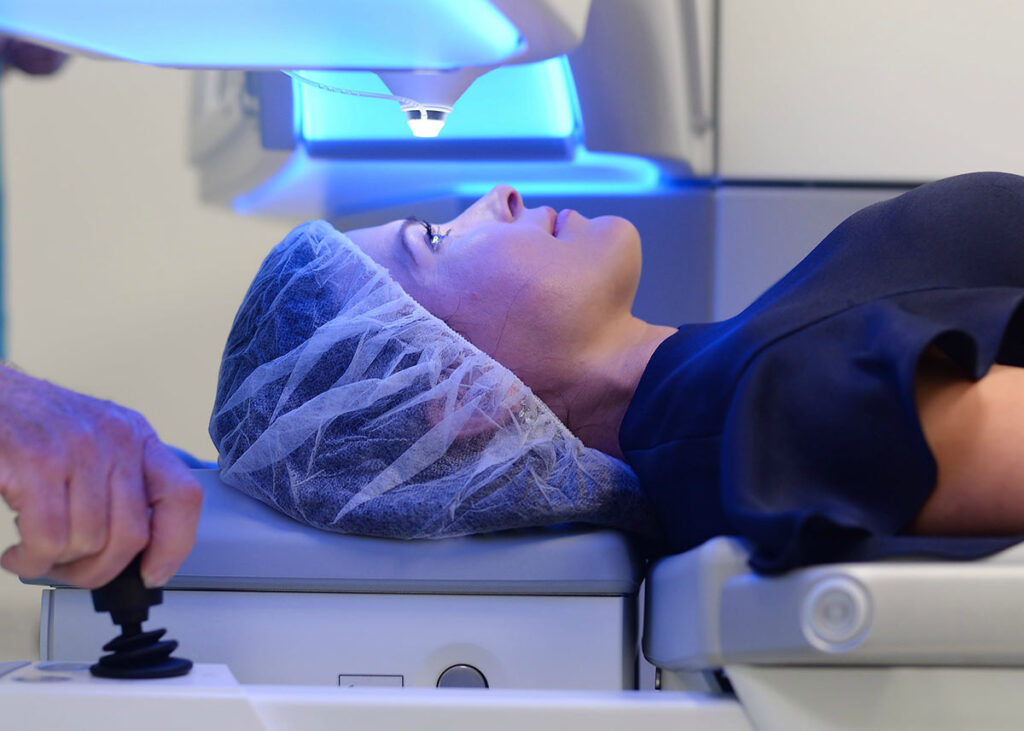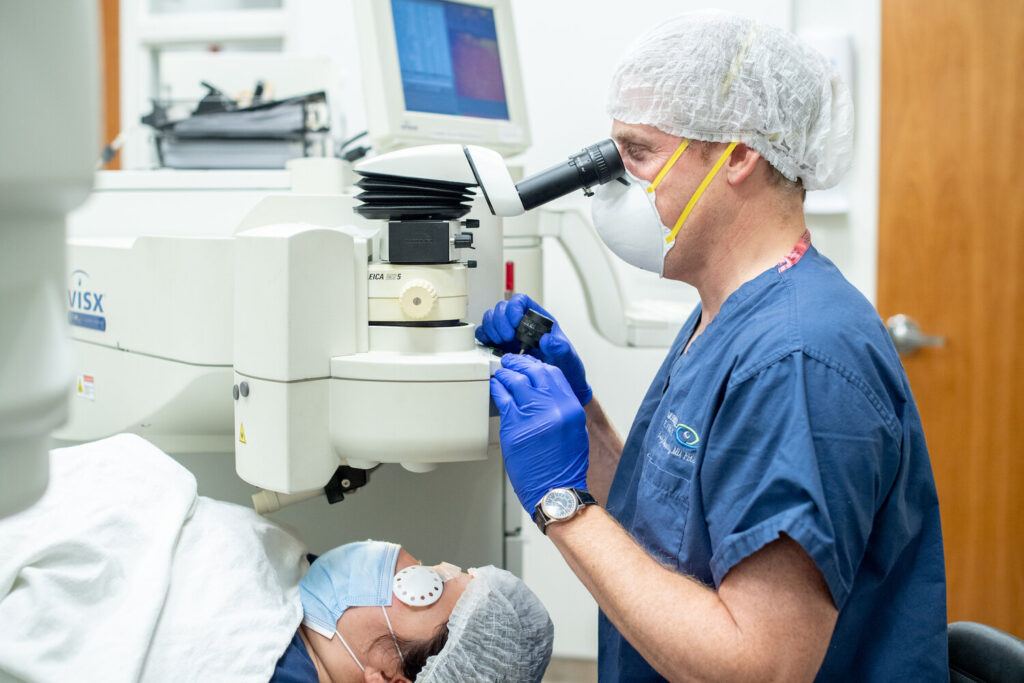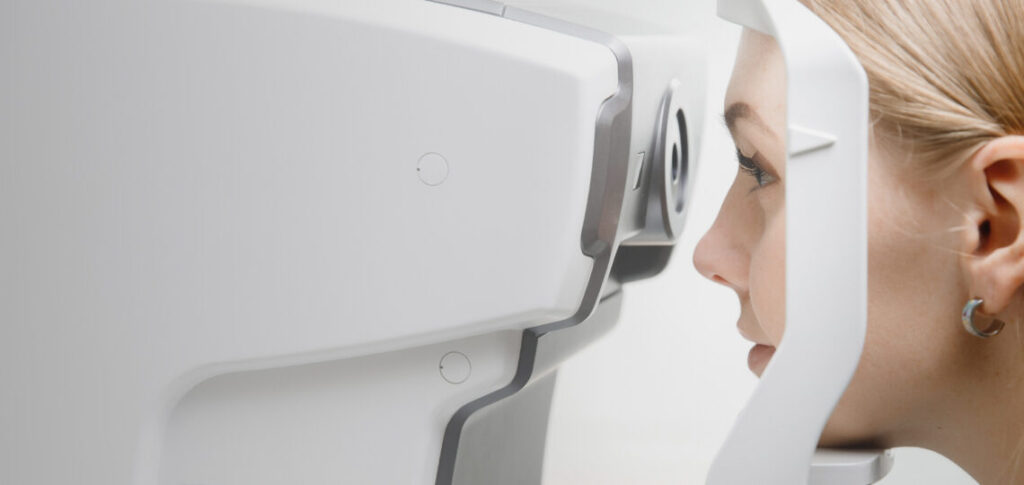LASIK eye surgery has revolutionized the way people correct their vision. This groundbreaking procedure offers a safe and effective solution for those looking to improve their eyesight. In this article, we will explore the basics of LASIK, the benefits it provides, and address common concerns surrounding the surgery. We will also discuss how to determine if you are a good candidate for LASIK.
Understanding the Basics of LASIK Eye Surgery
Before delving into the details, it is essential to understand the science behind LASIK and how it has evolved over the years.
Another notable advancement in LASIK eye surgery is the introduction of topography-guided LASIK. This technique uses detailed corneal mapping to guide the laser in reshaping the cornea, taking into account not only the refractive error but also the cornea’s shape and curvature. This personalized approach has shown promising results in improving visual acuity and reducing the risk of post-operative complications.
The Science Behind LASIK
LASIK stands for Laser-Assisted In Situ Keratomileusis, a procedure that reshapes the cornea to correct vision problems such as nearsightedness, farsightedness, and astigmatism. It works by using an excimer laser to precisely remove a small amount of tissue from the cornea, changing its shape and allowing light to focus correctly onto the retina.
By reshaping the cornea, LASIK helps improve visual clarity and reduces the dependency on prescription glasses or contact lenses. It is considered a highly safe and reliable procedure, with millions of successful treatments performed worldwide.

The Evolution of LASIK Surgery
Since its inception in the 1990s, LASIK surgery has undergone significant advancements. Initially, the procedure involved using a microkeratome, a surgical blade, to create a corneal flap. However, the development of femtosecond lasers has made it possible to create the corneal flap with greater precision and safety.
Femtosecond lasers, also known as bladeless LASIK, use ultrafast laser pulses to create a thin corneal flap. This technique minimizes the risk of complications and allows for a faster healing process compared to traditional LASIK.
Furthermore, the field of LASIK continues to evolve with the introduction of wavefront-guided technology. This technology allows for a more personalized treatment approach by mapping the unique characteristics of each individual’s eye. By incorporating wavefront data into the LASIK procedure, surgeons can address higher-order aberrations that were previously difficult to correct, leading to even better visual outcomes for patients.
The Benefits of LASIK Eye Surgery
LASIK offers numerous benefits for individuals seeking to improve their vision. Let’s explore some of these advantages:
Improved Vision Quality
One of the primary benefits of LASIK is enhanced vision quality. Many patients who undergo the procedure experience significantly improved visual acuity. This means they can see objects more clearly, with fewer distortions and improved sharpness.
With LASIK, patients often achieve a level of vision that surpasses what they could achieve with glasses or contact lenses. This improvement can have a profound impact on daily activities, such as reading, driving, and participating in sports.
Furthermore, LASIK can correct a variety of vision problems, including nearsightedness, farsightedness, and astigmatism. By reshaping the cornea using a laser, LASIK can address these issues and provide patients with clearer vision without the need for corrective lenses.
Many patients also report an improvement in their night vision after undergoing LASIK. This can be particularly beneficial for those who drive at night or engage in activities that require good low-light vision.
Quick Recovery Time
LASIK offers a relatively quick recovery time compared to other surgical procedures. Most patients experience improved vision within a day or two after the surgery. While some may have temporary vision fluctuations during the healing process, these typically resolve within a few weeks.
Unlike other eye surgeries, LASIK does not require extensive post-surgical care. Patients can usually resume their normal activities, including work, within a few days. However, it is essential to follow the post-surgery care instructions provided by the surgeon to ensure optimal healing. Find more about post-surgical care at https://ukhealthcare.uky.edu/orthopaedic-surgery-sports-medicine/resources/post-operative-general-instructions
The LASIK Procedure: A Step-by-Step Guide
Understanding the LASIK procedure can help alleviate concerns and provide clarity about what to expect. Let’s break down the process into three main stages:
Pre-Surgery Preparations
Prior to the surgery, you will undergo a comprehensive eye examination to evaluate your eligibility for LASIK. The surgeon will assess your vision, corneal thickness, and overall eye health to determine if you are a suitable candidate.
If you are deemed eligible, you will receive detailed instructions on how to prepare for the procedure. This may include avoiding contact lenses for a specific period before the surgery, arranging transportation to and from the clinic, and arranging for time off work to allow for recovery.
Additionally, during the pre-surgery preparations, you will have the opportunity to discuss any concerns or questions you may have with your surgeon. They will address your worries and provide you with the necessary information to ensure you feel confident and well-informed before proceeding with the surgery.
The Surgery Process
On the day of the surgery, you will be given local anesthesia to numb your eyes. The surgeon will then create a thin corneal flap using a femtosecond laser or a microkeratome. This flap creation is a delicate and precise step, requiring the surgeon’s skill and expertise.
Once the flap is created, the excimer laser will reshape the underlying corneal tissue with utmost precision. The laser uses a cool ultraviolet light beam to remove microscopic amounts of tissue, reshaping the cornea to correct your specific vision problems.
During the surgery, you will be asked to focus on a target light to help keep your eye steady. The surgeon will guide you through the process, ensuring your comfort and safety throughout.
Post-Surgery Care and Recovery
After the surgery, you may experience some mild discomfort or a foreign body sensation in your eyes. Your surgeon will provide you with eye drops and medications to help alleviate these symptoms and promote healing.
It is crucial to follow the post-operative care instructions provided by your surgeon. This may include using prescribed eye drops, avoiding rubbing or touching your eyes, wearing eye protection when sleeping, and attending follow-up appointments to monitor your healing progress.
During the recovery period, it is normal to experience fluctuations in your vision. Your eyes will gradually adjust and stabilize over time, resulting in improved clarity and reduced dependence on glasses or contact lenses.
Remember, every individual’s healing process is unique, and your surgeon will be there to guide you through each step, ensuring a smooth and successful recovery.

Addressing Common Concerns About LASIK
Despite its effectiveness, some people may have doubts or misconceptions about LASIK. Let’s address some common concerns:
Debunking LASIK Myths
There are several myths surrounding LASIK, such as the notion that it is a painful procedure or that the results are temporary. In reality, LASIK is a virtually painless procedure, thanks to the use of local anesthesia and the precision of modern techniques. To read more about local anesthesia click here.
LASIK provides long-lasting results, and the vision improvements achieved are typically permanent. However, it is important to note that age-related vision changes or certain eye conditions may affect the long-term stability of your vision.
Furthermore, another common myth about LASIK is that it is only suitable for individuals with mild vision problems. The truth is that LASIK technology has advanced significantly, allowing a broader range of vision issues to be corrected. From nearsightedness and farsightedness to astigmatism, LASIK can address a variety of refractive errors, providing clear vision for many individuals who were previously dependent on glasses or contact lenses.
Addressing Potential Risks and Complications
Like any surgical procedure, LASIK comes with potential risks and complications. However, serious complications are rare, and with proper patient selection and the expertise of a skilled surgeon, the likelihood of experiencing significant issues is minimal.
Potential risks include dry eyes, glare, halos, and fluctuations in vision. These are usually temporary or can be managed with post-operative care and treatments.
It is essential for individuals considering LASIK to undergo a thorough evaluation with an experienced eye care professional to determine their candidacy for the procedure. Factors such as corneal thickness, eye health, and refractive stability play a crucial role in the success and safety of LASIK surgery. By addressing these concerns and understanding the potential risks involved, individuals can make informed decisions about improving their vision through LASIK.
Determining If You’re a Good Candidate for LASIK
Not everyone is a suitable candidate for LASIK eye surgery. Here are some factors to consider:
Eligibility Criteria for LASIK Surgery
Individuals who are at least 18 years old, have stable vision for at least one year, and have a healthy cornea may be eligible for LASIK. Other factors, such as overall eye health and certain medical conditions, will be evaluated during the consultation process to ensure safety and successful outcomes.
Consultation and Evaluation Process
During the initial consultation, your surgeon will conduct a thorough evaluation of your eyes and assess your suitability for LASIK. They will inquire about your medical history, measure your refractive error, and check the thickness and shape of your cornea.
Your surgeon will also discuss the procedure in detail, address any concerns you may have, and provide personalized recommendations based on your specific needs and circumstances.
It is important to note that while LASIK is a popular and effective procedure for vision correction, not everyone may be a suitable candidate. Factors such as severe dry eye syndrome, thin corneas, or certain medical conditions like autoimmune disorders may impact your eligibility for LASIK. Your surgeon will carefully evaluate these factors to ensure the best possible outcome for your vision correction.
Furthermore, the technological advancements in LASIK surgery have made it possible to customize the procedure to each individual’s unique eye characteristics. Wavefront technology, for example, allows for a more personalized treatment that can address higher-order aberrations and provide better visual outcomes for patients with specific visual disturbances.
In conclusion, LASIK eye surgery offers a remarkable breakthrough in transforming vision and liberating individuals from the constraints of glasses or contact lenses. By understanding the basics of LASIK, its benefits, and how to determine eligibility, you can make an informed decision about whether it is the right option for you.
Read more: LASIK Surgery A Comprehensive Look at the Procedure and Its Benefits

